 2000 Kia Optima I Dimensions, Size & Specs
2000 Kia Optima I Dimensions, Size & SpecsMeasurements of the 2000 Kia Optima I, engineered for optimal performance and comfort
| Dimensions | |
|---|---|
| Length: | 4722-4745 mm185.9-186.8 in15.5-15.6 ft |
| Width: | 1815 mm71.5 in6.0 ft |
| Height: | 1410-1420 mm55.5-55.9 in4.6-4.7 ft |
| Trunk Capacity: | 368-479 liter13.0-16.9 cu ft |
| Weight Specifications | |
| Curb Weight: | 1320-1495 kg2910-3296 lbs |
| Maximal permitted Weight: | 1840-1985 kg4057-4376 lbs |
| Tire Specifications | |
| Rims Sizes: |
|
| Tire Sizes: |
|
The Kia Optima I, produced between 2000 and 2002, is a mid-size sedan that offered a balanced blend of size, weight, and practicality for its era. With an exterior length ranging from 4722 to 4745 mm (186 to 187 inches), it provides ample cabin space while maintaining manageable dimensions for urban and highway driving. The vehicle's width is a consistent 1815 mm (71.5 inches), contributing to a stable driving experience and interior shoulder room.
Height varies slightly between 1410 and 1420 mm (approximately 55.5 to 56 inches), giving the sedan a sleek profile without compromising headroom. Curb weight ranges from 1320 to 1495 kg (2909 to 3297 lbs), depending on specific trim and equipment, while the maximum permissible weight is between 1840 and 1985 kg (4056 to 4375 lbs), ensuring safe load handling.
This generation of the Optima offers versatile luggage capacity from 368 to 479 liters (13 to 16.9 cubic feet), allowing for decent cargo storage for everyday needs or road trips. The vehicle was equipped with tire sizes 205/60 R15 and 195/70 R14, mounted on either 15-inch or 14-inch rims, balancing ride comfort and handling performance.
Overall, the Kia Optima I of the early 2000s stands as a practical family sedan with solid size credentials that make it suitable for drivers wanting a mid-size vehicle with good interior space, respectable luggage capacity, and reliable road presence.
Discover the standout features that make the 2000 Kia Optima I a leader in its class
Have a question? Please check our knowledgebase first.
The Kia Optima I sedan, produced between 2000 and 2002, measures between 4722 mm and 4745 mm in length (approximately 186.0 inches to 186.8 inches). This slight variation depends on the specific model and trim level. This length places the vehicle firmly within the midsize sedan category, offering a balanced profile that provides ample interior space for passengers while ensuring manageable exterior dimensions for everyday driving and parking.
The Kia Optima I has a width of 1815 mm, which is about 71.5 inches. This width allows for comfortable seating arrangements inside the cabin and contributes to overall vehicle stability on the road. The width is well-suited for family and commuter needs, providing enough shoulder room for up to five occupants while maximizing cabin comfort without making the vehicle too large for typical urban environments.
The height of the Kia Optima I ranges from 1410 mm to 1420 mm (approximately 55.5 inches to 55.9 inches). This height is typical for a midsize sedan and contributes to a relatively low center of gravity, which aids in vehicle stability and handling. The moderate height strikes a good balance between aerodynamics, headroom, and overall exterior presence, providing a comfortable driving experience while maintaining good visibility.
The curb weight of the Kia Optima I varies between 1320 kg and 1495 kg (approximately 2,910 lbs to 3,296 lbs), depending on the trim and included features. A lighter curb weight, closer to the 1320 kg end, can improve acceleration and fuel efficiency, while heavier versions with more equipment or a higher trim level might feel sturdier and offer more features but at a slight cost to fuel economy. Overall, the weight range supports balanced handling and reasonable fuel consumption for a midsize sedan of its time.
The maximum weight (gross vehicle weight rating) of the Kia Optima I ranges from 1840 kg to 1985 kg, which is about 4,057 lbs to 4,376 lbs. This figure includes the weight of the car itself plus passengers, cargo, and any additional loads. Staying within this limit is crucial for safety, optimal vehicle performance, and regulatory compliance. It ensures that braking, suspension, and engine systems function as intended without undue stress.
The luggage capacity of the Kia Optima I ranges between 368 liters and 479 liters (roughly 13.0 to 16.9 cubic feet). This variation depends on trim levels and whether rear seats are folded. This luggage volume is quite generous for its class, providing enough space to accommodate luggage for family trips or daily shopping. Compared to competitors in the midsize sedan category from the early 2000s, the Optima I offers competitive cargo space, making it a practical choice for those valuing storage.
Yes, the Kia Optima I will comfortably fit into a standard garage. Typical single-car garages have an internal width of about 2.4 to 2.7 meters (7.9 to 8.9 feet) and a length of approximately 5.0 to 6.0 meters (16.4 to 19.7 feet). Given the Optima I's length of approximately 4.7 meters (about 15.5 feet), width of 1.8 meters (about 5.9 feet), and low height of around 1.42 meters (4.7 feet), it fits well within standard garage dimensions, allowing sufficient space for opening doors and maneuvering within the garage.
The Kia Optima I, released in 2000, represented a notable size increase and advancement compared to earlier Kia midsize sedans such as the Sephia. The Optima I featured a longer length—around 4722 to 4745 mm compared to earlier models which typically measured shorter—providing expanded interior space, improved passenger comfort, and a more imposing exterior presence. The width and height were also enhanced slightly to modernize the vehicle's proportions, aligning it more with international midsize sedan standards and offering a competitive edge in its segment.
When compared to other midsize sedans from the early 2000s such as the Toyota Camry, Honda Accord, and Hyundai Sonata, the Kia Optima I holds its ground well in terms of size and practicality. Its length of around 4722–4745 mm is generally on par with or slightly larger than some competitors. Cargo capacity up to 479 liters is competitive, although some rivals might offer slightly more refined interior materials or features. In terms of dimensions, the Optima I is well-sized for families needing a spacious sedan that fits comfortably in urban and suburban environments.
The Kia Optima I offers rim sizes of 14 and 15 inches, paired with tire sizes of 195/70 R14 and 205/60 R15. The 14-inch rims with taller sidewall tires generally provide a softer, more comfortable ride by absorbing road imperfections better, ideal for everyday commuting. The 15-inch rims tend to offer improved handling and a slightly sportier feel due to lower sidewall tires but may result in a firmer ride over rough surfaces. These options enabled buyers to select the balance of ride comfort and performance that suited their preferences.
Discover similar sized cars.

| Production: | 1989-2000 |
|---|---|
| Model Year: | 1989 |
| Length: | 4765 mm187.6 in |
| Width: | 1799 mm70.8 in |
| Height: | 1411-1418 mm55.6-55.8 in |

| Production: | 1991-1996 |
|---|---|
| Model Year: | 1990 |
| Length: | 4740 mm186.6 in |
| Width: | 1775 mm69.9 in |
| Height: | 1410-1420 mm55.5-55.9 in |
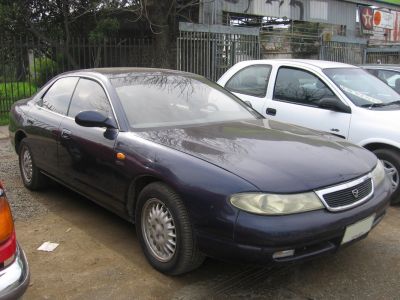
| Production: | 1992-1998 |
|---|---|
| Model Year: | 1992 |
| Length: | 4695 mm184.8 in |
| Width: | 1750 mm68.9 in |
| Height: | 1340 mm52.8 in |
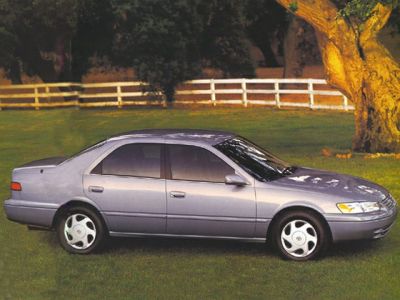
| Production: | 1996-1999 |
|---|---|
| Model Year: | 1996 |
| Length: | 4765 mm187.6 in |
| Width: | 1785 mm70.3 in |
| Height: | 1410-1430 mm55.5-56.3 in |
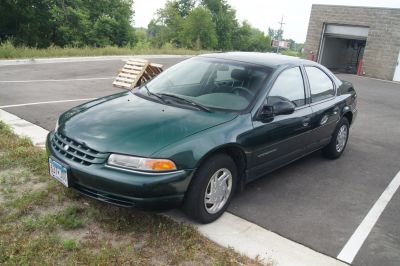
| Production: | 1995-2000 |
|---|---|
| Model Year: | 1996 |
| Length: | 4740 mm186.6 in |
| Width: | 1803 mm71.0 in |
| Height: | 1374-1380 mm54.1-54.3 in |
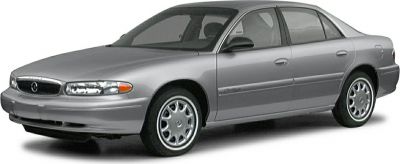
| Production: | 1997-2005 |
|---|---|
| Model Year: | 1997 |
| Length: | 4790-4940 mm188.6-194.5 in |
| Width: | 1850 mm72.8 in |
| Height: | 1440 mm56.7 in |
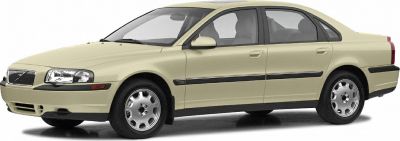
| Production: | 1998-2003 |
|---|---|
| Model Year: | 1999 |
| Length: | 4822 mm189.8 in |
| Width: | 1832 mm72.1 in |
| Height: | 1434-1450 mm56.5-57.1 in |
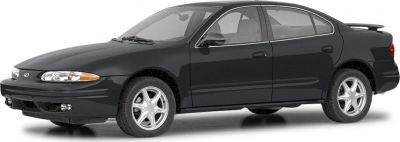
| Production: | 1998-2004 |
|---|---|
| Model Year: | 1999 |
| Length: | 4740 mm186.6 in |
| Width: | 1780 mm70.1 in |
| Height: | 1390 mm54.7 in |
